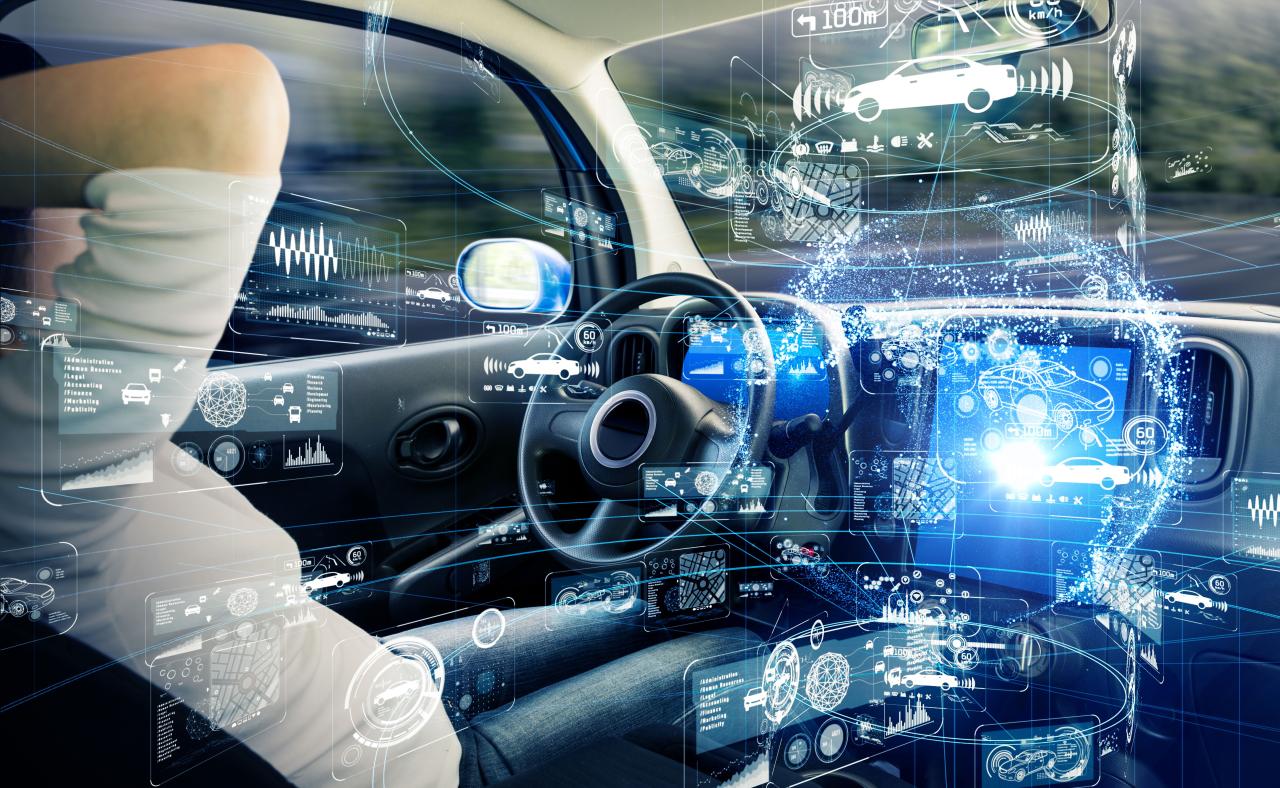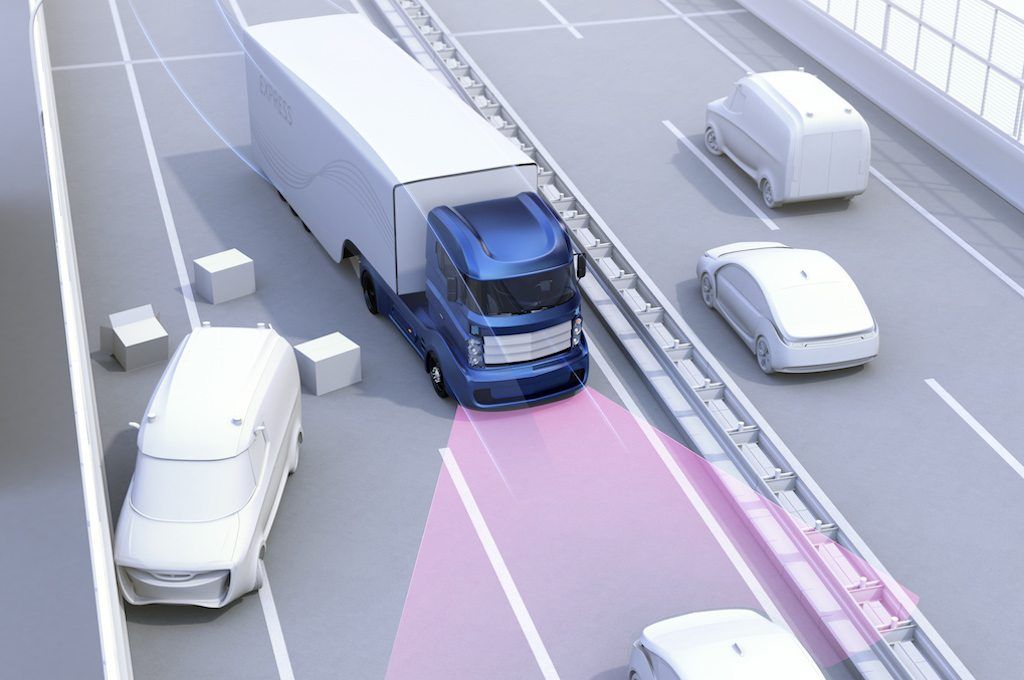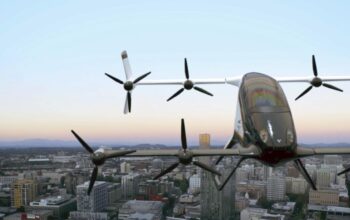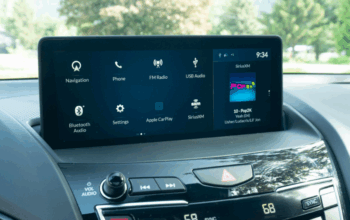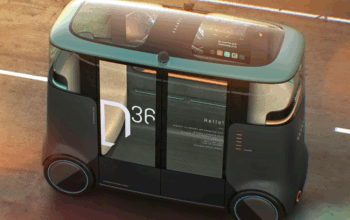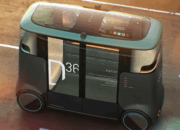The concept of a vehicle operating without human intervention, once confined to the realm of science fiction, is rapidly transitioning into tangible reality. Driverless transport, or autonomous vehicles (AVs), represents a monumental shift in how we perceive and interact with mobility. Far more than just a technological novelty, this revolution promises to fundamentally reshape urban planning, logistics, personal freedom, and even global economies. This comprehensive exploration delves into the intricacies of autonomous driving, examining its foundational technologies, the transformative benefits it promises, the formidable challenges it faces, and the evolving roadmap towards a truly driverless future.
Defining Autonomy: Levels of Self-Driving
To understand the progression of driverless transport, it’s crucial to grasp the widely accepted classification system established by the Society of Automotive Engineers (SAE International), which defines six levels of driving automation:
A. Level 0: No Automation: The human driver performs all driving tasks. This includes classic cars or vehicles without any automated driving assistance. B. Level 1: Driver Assistance: The vehicle has either steering or acceleration/deceleration support, but not both simultaneously. Examples include adaptive cruise control or lane-keeping assist, where the driver remains fully in control. C. Level 2: Partial Automation: The vehicle can control both steering and acceleration/deceleration simultaneously. The driver must remain engaged and monitor the driving environment, ready to take over at any moment. Features like “hands-on” highway assist systems fall into this category. D. Level 3: Conditional Automation: The vehicle can perform all driving tasks under specific conditions (e.g., on highways). The driver is not required to monitor the environment continuously but must be ready to intervene if the system requests it. This is where the concept of “eyes off” but “mind on” the road emerges. Legal and technical hurdles currently make widespread Level 3 deployment complex. E. Level 4: High Automation: The vehicle can perform all driving tasks and monitor the driving environment under specific conditions (e.g., within a geofenced area or specific weather conditions). If the system encounters a situation it cannot handle, it will safely bring the vehicle to a minimal risk condition (e.g., pull over). The driver is not expected to intervene in these operational design domains (ODDs). Robotaxis operating in designated urban zones are examples of Level 4 applications. F. Level 5: Full Automation: The vehicle can perform all driving tasks under all road conditions and in all environments, equivalent to human driving capability. No human intervention is ever required. This represents the ultimate goal of autonomous driving, where the vehicle is truly driverless.
The current focus of leading companies is predominantly on achieving robust Level 4 capabilities within defined ODDs, gradually expanding these domains as technology and regulations mature.
The Technological Pillars of Autonomous Driving
Achieving true autonomy is an extraordinary feat of engineering and relies on the seamless integration of highly sophisticated technologies, often working in concert.
A. Advanced Sensor Suites
AVs perceive their surroundings through a diverse array of sensors, each with unique strengths and weaknesses:
- Lidar (Light Detection and Ranging): Emits pulsed laser light to measure distances and create highly accurate 3D maps of the environment. Lidar is excellent for precise mapping and object detection, especially in varying light conditions.
- Radar (Radio Detection and Ranging): Uses radio waves to detect objects and measure their speed and distance, even through fog, rain, or snow. Radar is crucial for long-range detection and adverse weather conditions.
- Cameras: Provide high-resolution visual data, allowing the AV to “see” traffic lights, lane markings, road signs, pedestrians, and other vehicles. Cameras are essential for object classification and understanding complex scenes, though their performance can be affected by lighting.
- Ultrasonic Sensors: Short-range sensors typically used for parking assistance, detecting obstacles very close to the vehicle.
The redundancy provided by multiple sensor types ensures robustness, allowing the AV to make informed decisions even if one sensor’s data is temporarily compromised.
B. High-Performance Computing Platforms
Processing the immense volume of data generated by these sensors in real-time requires powerful onboard computing platforms. These specialized computers run complex algorithms, artificial intelligence (AI) models, and machine learning (ML) programs to:
- Sensor Fusion: Combine data from all sensors to create a comprehensive and accurate understanding of the vehicle’s surroundings.
- Perception: Identify and classify objects (e.g., distinguishing a pedestrian from a lamppost), track their movement, and predict their behavior.
- Localization: Precisely determine the vehicle’s own position on a high-definition map, even within centimeters.
- Prediction: Forecast the future movements of other road users based on their current trajectory and observed behavior.
- Planning: Determine the optimal path, speed, and maneuvers for the vehicle, adhering to traffic laws and safety protocols.
- Control: Execute the planned trajectory by sending commands to the vehicle’s steering, braking, and acceleration systems.
These computing systems are often equipped with specialized AI accelerators to handle the demanding computational load.
C. High-Definition (HD) Maps
Beyond standard GPS, AVs rely on incredibly detailed HD maps that provide granular information about the road network. These maps include:
- Lane-level accuracy: Precise lane geometry, including lane width, curvature, and number of lanes.
- Traffic sign and signal locations: Exact positions of stop signs, traffic lights, and speed limit signs.
- Road markings: Information on crosswalks, turn lanes, and other painted markings.
- Static objects: Locations of poles, curbs, guardrails, and other fixed infrastructure.
HD maps provide a crucial layer of contextual information that supplements real-time sensor data, especially in complex urban environments or where sensor visibility might be temporarily limited.
D. Artificial Intelligence and Machine Learning
AI and ML are the brains behind autonomous driving, enabling AVs to learn from vast datasets and make intelligent decisions:
- Deep Learning: Neural networks are used for image recognition (identifying objects from camera feeds), object detection, and behavioral prediction.
- Reinforcement Learning: AVs can learn optimal driving strategies through trial and error in simulated environments.
- Predictive Analytics: AI models analyze patterns in traffic flow and human behavior to anticipate potential hazards and movements.
- Decision-Making Algorithms: Complex algorithms weigh various factors (safety, efficiency, comfort) to determine the best course of action in real-time.
The continuous improvement of AI models through training on petabytes of real-world and simulated driving data is paramount to the advancement of autonomous capabilities.
The Transformative Benefits of Driverless Transport
The widespread adoption of driverless transport holds the promise of profound societal and economic benefits, extending far beyond mere convenience.
A. Enhanced Safety and Reduced Accidents
This is arguably the most compelling benefit. Human error is responsible for over 90% of all road accidents. AVs, free from distraction, fatigue, impairment, or emotional biases, have the potential to significantly reduce collisions, injuries, and fatalities. Autonomous systems react faster, perceive more broadly, and follow rules more consistently than human drivers. This could lead to:
- Fewer Fatalities: Saving millions of lives globally over decades.
- Reduced Injuries: Decreasing the burden on healthcare systems and improving quality of life.
- Lower Economic Costs: Reducing property damage, insurance premiums, and accident-related traffic congestion.
B. Improved Traffic Flow and Reduced Congestion
AVs communicate with each other and with infrastructure, enabling highly optimized traffic management. This could lead to:
- Smoother Traffic Flow: Eliminating abrupt braking and acceleration, leading to more consistent speeds.
- Increased Road Capacity: Vehicles can travel closer together and at higher speeds more safely, effectively increasing the throughput of existing road networks.
- Optimized Routing: AVs can collectively choose the most efficient routes, avoiding bottlenecks and distributing traffic more evenly.
- Elimination of Parking Search: Autonomous vehicles could drop off passengers and then find parking themselves (or even go to a remote lot), reducing city center congestion caused by drivers circling for spots.
C. Enhanced Mobility and Accessibility
Driverless transport promises to democratize mobility for segments of the population currently underserved by traditional transportation:
- Elderly Individuals: Who may lose the ability to drive due to age or health.
- People with Disabilities: Offering independence and flexibility previously unavailable.
- Non-Drivers: Providing convenient, on-demand transportation without the need for personal vehicle ownership or public transit access.
- Children and Teenagers: Potentially allowing supervised autonomous rides, expanding their independence.
This enhanced mobility can improve social inclusion, access to employment, healthcare, and recreational activities.
D. Economic Efficiencies and New Business Models
The economic impacts are vast and transformative:
- Logistics and Freight: Autonomous trucks can operate 24/7, reducing delivery times, labor costs, and fuel consumption through optimized platooning and routing.
- Ride-Hailing and Shared Mobility: Driverless robotaxis could drastically reduce the cost of ride-hailing services, making them more affordable and accessible than personal car ownership for many. This fosters a shift from private ownership to “mobility as a service.”
- Productivity Gains: Passengers in AVs can utilize travel time for work, relaxation, or entertainment, turning commuting into productive time.
- Optimized Fleet Management: Businesses with vehicle fleets can see significant savings in fuel, maintenance, and labor.
- Real Estate Reimagining: Reduced need for parking spaces in urban centers could free up valuable land for housing, parks, or other developments.
E. Environmental Benefits
While not universally true depending on the energy source for charging, AVs offer significant potential environmental advantages:
- Fuel Efficiency: Optimized driving patterns (smooth acceleration/braking, efficient routing) can lead to substantial fuel savings for internal combustion engine (ICE) vehicles and extended range for electric vehicles (EVs).
- Reduced Emissions: If combined with electric powertrains, AVs contribute to zero tailpipe emissions, improving urban air quality.
- Less Vehicle Production: In a shared autonomous fleet model, fewer vehicles might be needed overall, reducing the environmental footprint of manufacturing and disposal.
Navigating the Roadblocks: Challenges and Concerns
Despite the immense promise, the road to widespread driverless transport is fraught with significant technical, ethical, regulatory, and societal challenges.
A. Technical Complexities and Edge Cases
While AVs excel in predictable environments, handling “edge cases” remains a formidable hurdle. These are rare, unusual, or complex situations that are difficult for current AI to interpret and react to safely:
- Unusual Weather: Heavy snow, torrential rain, or dense fog can obscure sensors.
- Unforeseen Obstacles: A mattress falling off a truck, unusual debris, or animal crossing.
- Human Predictability: The unpredictable behavior of human drivers, pedestrians, and cyclists, especially when not adhering to rules.
- Complex Intersections: Navigating unprotected left turns or busy multi-lane intersections with many actors.
- Construction Zones: Continuously changing road layouts and temporary signage.
Ensuring robust performance across the infinite variability of real-world driving scenarios requires vast amounts of data, advanced AI, and rigorous testing.
B. Safety, Testing, and Validation
Proving the safety of AVs is paramount. Unlike human drivers who have decades of real-world experience, AV systems need to be tested exhaustively to demonstrate their reliability. This involves:
- Billions of Miles: Accumulating billions of miles of real-world and simulated driving data.
- Rigorous Testing Protocols: Developing standardized, comprehensive testing methods.
- Transparency and Accountability: Establishing clear frameworks for reporting incidents and analyzing failures.
- Trust and Acceptance: Overcoming public skepticism and building trust through a demonstrated safety record.
Even a single highly publicized accident involving an AV can severely set back public perception and adoption.
C. Regulatory and Legal Frameworks
Existing traffic laws and legal frameworks were designed for human drivers. Adapting them for AVs presents complex challenges:
- Liability in Accidents: Who is at fault if an AV causes an accident – the owner, the manufacturer, the software provider, or the sensor maker?
- Licensing and Certification: How will AVs be licensed? What standards must they meet for certification?
- Data Privacy: AVs collect vast amounts of data. How will this data be stored, used, and protected?
- Ethical Dilemmas: Programming AVs to make instantaneous life-or-death decisions in unavoidable accident scenarios (e.g., “trolley problem” scenarios) presents profound ethical challenges that society must grapple with.
- International Harmonization: Different countries and regions will likely adopt varying regulations, complicating global deployment.
D. Cybersecurity Risks
As highly connected, software-driven machines, AVs are vulnerable to cyberattacks. A malicious actor gaining control of an AV or its fleet could have catastrophic consequences. Ensuring robust cybersecurity measures, including encryption, secure software updates, and intrusion detection, is critical.
E. Socio-Economic Impacts and Job Displacement
The widespread adoption of AVs will lead to significant job displacement, particularly for professional drivers (taxi drivers, truck drivers, bus drivers). This requires proactive planning for workforce retraining, new economic opportunities, and social safety nets. Furthermore, the shift from private ownership to shared mobility could impact the automotive sales, insurance, and repair industries.
F. Infrastructure Readiness
While AVs can function on existing roads, dedicated “smart city” infrastructure, including Vehicle-to-Everything (V2X) communication, intelligent traffic lights, and optimized charging networks, will unlock their full potential. This requires substantial public and private investment.
The Road Ahead: Phased Deployment and Key Trends
The journey to a fully driverless future will not be a sudden switch but a gradual, phased deployment, characterized by specific applications and evolving trends.
A. Geofenced Robotaxis and Shuttles
The most immediate and visible manifestation of Level 4 autonomy will continue to be robotaxi services operating within limited, geofenced urban areas. Companies like Waymo and Cruise are already demonstrating this in cities like Phoenix and San Francisco. These services typically operate in predictable environments, benefiting from extensive HD mapping and controlled conditions. Expanding these operational design domains (ODDs) will be a key step. Autonomous shuttles for last-mile connectivity in campuses or specific neighborhoods will also become more common.
B. Autonomous Long-Haul Trucking
The trucking industry is ripe for disruption by autonomy. Long-haul routes on highways are relatively less complex than urban driving, making them ideal for early deployment of Level 4 autonomous trucks. These trucks could operate primarily on highways, with human drivers handling the first and last miles. This promises significant efficiency gains, reduced operating costs, and improved safety for the logistics sector.
C. Advanced ADAS in Personal Vehicles
While full Level 5 autonomy in privately owned vehicles is still decades away, consumers will continue to see the progressive introduction of more sophisticated Level 2 and potentially Level 3 features in their cars. These systems will become increasingly capable, offering more hands-free driving experiences in specific scenarios, gradually familiarizing the public with automated driving.
D. The Rise of “Mobility as a Service” (MaaS)
Driverless transport will accelerate the shift towards MaaS, where consumers access transportation on demand rather than owning vehicles. This could lead to a significant reduction in private car ownership, especially in dense urban areas, offering more efficient, cost-effective, and environmentally friendly transportation options.
E. AI and Data-Driven Continuous Improvement
The performance of AVs will continuously improve through iterative development cycles driven by massive amounts of data. Companies will use real-world driving data, simulated environments, and AI-powered analysis to refine their algorithms, address edge cases, and enhance safety and efficiency. This ongoing learning process is crucial for scaling autonomous capabilities.
F. Collaboration Between Industry and Government
The advancement of driverless transport requires unprecedented collaboration between automakers, technology companies, regulatory bodies, and local governments. This cooperation is essential for establishing common standards, developing appropriate regulations, and building the necessary infrastructure to support widespread AV deployment. Public-private partnerships will be key to overcoming many of the non-technical hurdles.
Conclusion
Driverless transport is not merely an incremental improvement in automotive technology; it represents a fundamental paradigm shift with the potential to redefine personal mobility, logistics, urban living, and economic activity. While the journey is undeniably complex, fraught with technical challenges, ethical dilemmas, and regulatory hurdles, the sheer magnitude of the promised benefits—safer roads, reduced congestion, enhanced accessibility, and unprecedented economic efficiencies—drives relentless innovation and investment.
The road ahead for autonomous vehicles will be a phased one, starting with geofenced services and long-haul trucking, gradually expanding as technology matures and public trust grows. Ultimately, the successful integration of driverless transport will hinge on robust technological development, comprehensive safety validation, pragmatic regulatory frameworks, and thoughtful societal adaptation. As these self-driving machines navigate our roads, they will not just transport us from point A to point B; they will transport society into a new era of mobility, efficiency, and possibility, transforming the very fabric of our connected world. The future of movement is here, and it’s driving itself.

